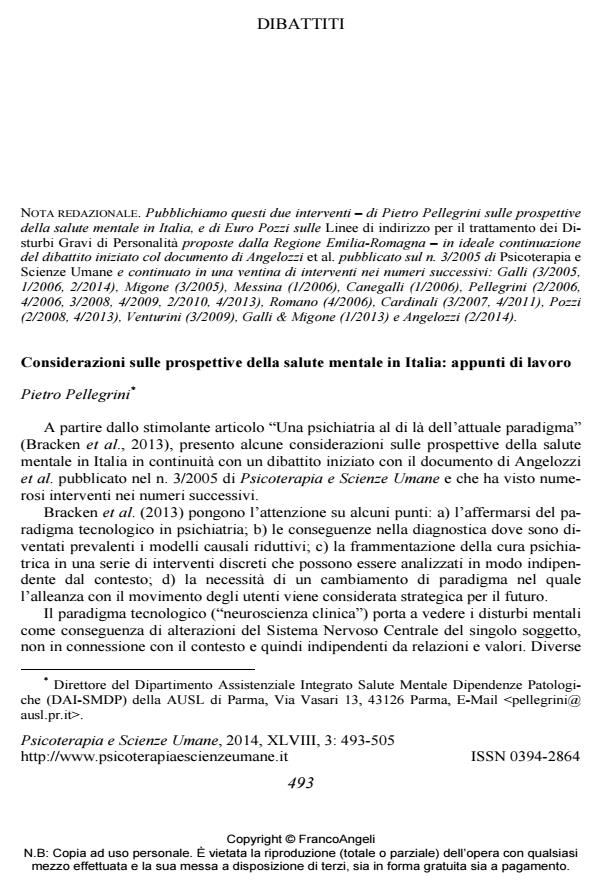On the perspectives of mental health in Italy: Working notes
Journal title PSICOTERAPIA E SCIENZE UMANE
Author/s Pietro Pellegrini
Publishing Year 2014 Issue 2014/3
Language Italian Pages 0 P. 493-505 File size 73 KB
DOI 10.3280/PU2014-003008
DOI is like a bar code for intellectual property: to have more infomation
click here
Below, you can see the article first page
If you want to buy this article in PDF format, you can do it, following the instructions to buy download credits

FrancoAngeli is member of Publishers International Linking Association, Inc (PILA), a not-for-profit association which run the CrossRef service enabling links to and from online scholarly content.
The perspectives of Mental Health Services make us reflect on the theoretical basis, the mental health professionals’ responsibilities, the mandates of care and control. In Italy there is also the problem of the organization of the Departments of Community Psychiatry, that are not the same in different Regions. Furthermore there is a unity of neurology and psychiatry (neuropsychiatry) for childhood and adolescence, while in adult psychiatry the two disciplines are separated since many years. The need to modernize the organization also to make it more appropriate to address the wide gap between demand and supply, and new needs in a renewed relationship with users and their movements, are emphasized.
Keywords: Mental health, skills, paradigms of psychiatry, services-user movement in psychiatry
Pietro Pellegrini, Considerazioni sulle prospettive della salute mentale in Italia: appunti di lavoro in "PSICOTERAPIA E SCIENZE UMANE" 3/2014, pp 493-505, DOI: 10.3280/PU2014-003008